Skimming Credentials with Azure's Front Door WAF

A Web Application Firewall (WAF) is a powerful thing. It inspects all traffic that traverses it, seeing everything that is submitted to a page. EVERYTHING.
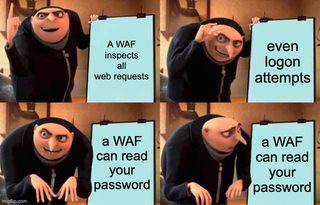
Today we’ll demonstrate how an attacker could use access to the Front Door WAF in Azure and Log Analytics to skim credentials from a site that the WAF is protecting.
By creating a custom rule to match logon events, we can capture both usernames and passwords in cleartext as they make their way through the WAF.

How it Works
The Azure Front Door WAF allows you to create custom rules. These rules can match on specific IPs, headers, body content, and POST parameters.
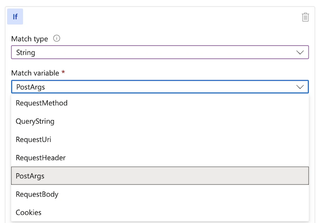
If we create a Custom Rule that matches on POST parameters 'username' and 'password' for any values, and we set the rule to 'Log traffic only', we'll quietly send people's usernames and passwords to our logs.
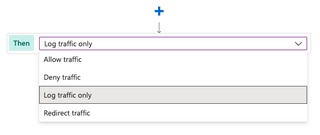
Demonstration
Sounds great in theory – let's prove it!
WAF Setup
Here is the logon page for Acme Computer Company. It is protected with the Azure Front Door WAF.
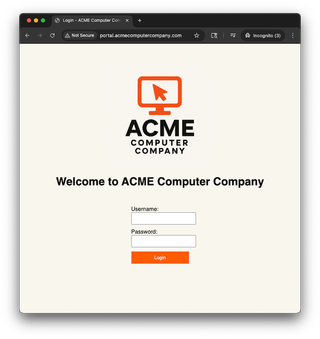
Note: This attack does not work against the Application Gateway WAF. It will only work with the Front Door WAF for reasons I'll explain later.
If we examine the HTML source, we see that it POSTs two parameters: username and password. We'll make a note of that for later.

Logging Setup
Next, make sure that logs are set up to flow from the Front Door WAF to your Log Analytics workspace. To do this, go to 'Diagnostic setting' under the Monitoring header on the left side of the Azure portal. If it's blank, select 'Add diagnostic setting' and configure it like the screenshot below.
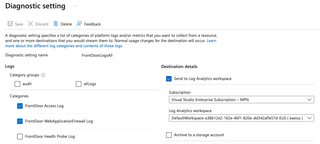
We only truly need the 'FrontDoor WebApplicationFirewallLog' category.
Adding a Malicious Rule
To start skimming passwords, we'll first create a new custom rule in our Front Door WAF. Let's call it something innocuous, like 'PasswordCapture'. Set the Priority to something low, like 5.
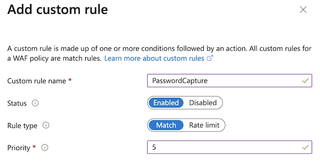
This will make sure it is evaluated before any other rules that might block or allow traffic. (Don't worry – those other rules will still be evaluated, as I'll explain later.)
Next, configure the If condition to match on POST arguments identified earlier -- 'username' and 'password'. For these, we set our Operator to the 'Any' value. This will match any values for username or password. Configure the Then portion to 'Log Traffic Only'.
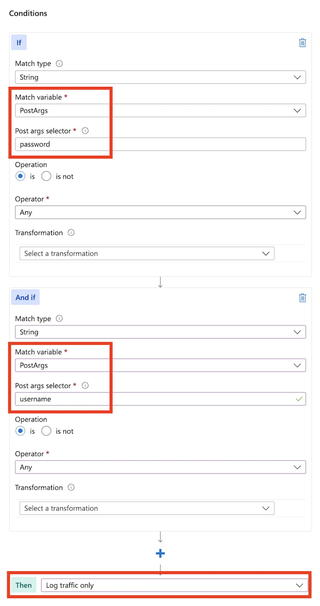
Click 'Add' at the bottom. You should now see your new Custom Rule in the list, with an action of 'Log'.
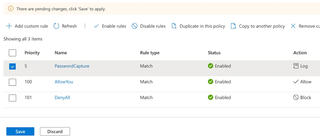
Click 'Save' to complete the change.
It is worth noting that usually, once a rule is matched, the WAF stops evaluating other rules. However, since our rule is set to 'Log' only, the other rules still get evaluated.
Generating an Event
Normally we would just wait for our users to log in. However, this time we'll perform that action ourselves.
Here, we can pretend to be a normal user logging in via a browser.
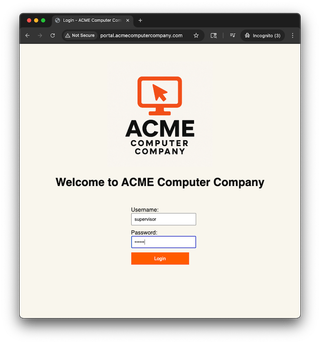
And for demonstration purposes, we'll show it as a curl request, with the POST parameters highlighted:

Let's Farm Some Loot!
After collecting some logon events, it's time to reap our rewards!
Go to your Log Analytics workspace for the WAF. Select 'Logs' on the left.
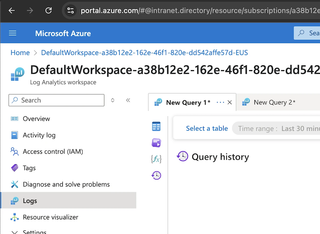
In the upper-right corner, switch it from 'Simple mode' to 'KQL mode':
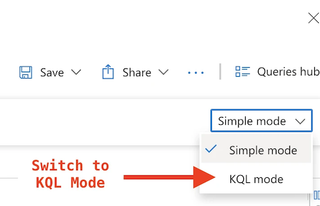
Now enter the following query. If you named your rule something other than 'PasswordCapture', enter that instead.
AzureDiagnostics
| where Category == "FrontDoorWebApplicationFirewallLog"
and ruleName_s == "PasswordCapture"
| project TimeGenerated, ruleName_s, details_matches_s
| order by TimeGenerated descThis should result in a listing of recent traffic that matched our rules for containing a 'username' and 'password' POST. Expand the details, and you'll see the username and password revealed.
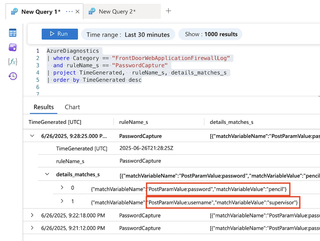
I should note that during normal WAF operations, it is possible to protect sensitive data from appearing in fields, using Azure's data-scrubbing feature. I recommend that admins include a filter for password fields at the least.
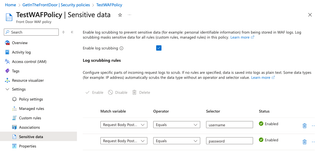
What are the Prereqs for this Attack?
To pull off this attack you'll need a few things:
- Azure Front Door WAF
- Protecting a logon page
- Access to modify the Custom Rules for the WAF
- Access to Log Analytics workspace for the WAF
Let's take a more in-depth look at each of these requirements.
1. Azure Front Door WAF
As mentioned, this attack only works with Front Door WAF, not with Application Gateway WAF. The logs for the Front Door WAF are very verbose and show the matching pattern. The Application Gateway logs for Custom Rules only show what rule was matched but not the offending content.
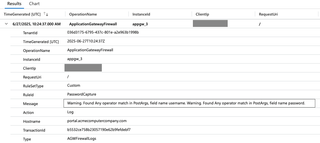
The curious thing is, the values will still show up in the logs if they are matched by a Managed Rule like the OWASP SQLi rules. We just can't force the Application Gateway WAF to give up its secrets directly.

2. WAF Protecting a Logon Page
Now for the second of these requirements – the logon page – something worth capturing. If a company is protecting a site with a WAF, it's probably because the site takes user-supplied input and has dynamic pages. This is not always the case, but often it is. Why put a big fancy WAF in front of a static page? There's a decent chance that if Front Door is being used at all, it's being used with a site that takes logon data.
3. Access to Modify WAF Custom Rules
The following subscription-level roles will have access to update custom rules:
- Owner
- Contributor
- Network Contributor
4. Access to Read Log Analytics Workspace
In order to read a Log Analytics workspace, you will need any of the following roles assigned at the Subscription, Resource Group, or the Log Analytics workspace itself:
- Owner
- Contributor
- Reader
- Log Analytics Contributor
- Log Analytics Reader
- Monitoring Reader
- Monitoring Contributor
- Monitoring Policy Contributor
Conclusion
I stumbled upon this idea while I was trying to solve false-positives from the Azure WAF. It would keep picking up passwords with certain strings and special characters as potential SQLi.
While this has been demonstrated with the Azure Front Door WAF, the general approach might also be applied to other products. We aren't limited merely to usernames and passwords. We can also be on the lookout for API keys and bearer tokens that are passed in headers.
I guess the important takeaway from this is: be careful who you let inspect plaintext network traffic, and be careful who is allowed to read your logs. While this configuration was intentionally evil, I have seen many passwords accidentally captured by a WAF during normal operations.